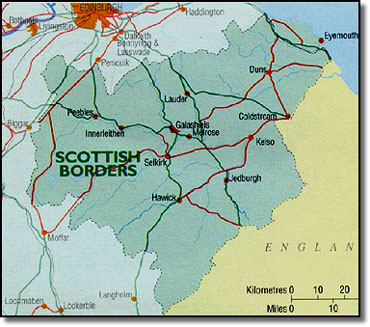

Scottish Borders
Electorate: 85,892
Area (Hectares): 472,749
This unitary authority covers the part of the Southern uplands closest to the border with England. It stretches from the east coast to Tweedsmuir in the west. The area includes agricultural and moorland and the market towns of Melrose, Peebles, Hawick, Kelso and Jedburgh. Traditionally, the region is famous for its textile industry which produces tweed cloth. The local economy is dependent on textiles, electronics, tourism and agriculture. BSE is an important issue in the upland areas.
There is a Liberal tradition in the Borders with both parliamentary seats in the area being held by the Liberal Democrats. Sir David Steel was the MP for the old single Borders seat from 1965, and for Tweeddale, Ettrick & Lauderdale after the constituency was split in 1983. As with many of the other predominantly rural areas of Scotland, local politics is dominated by independents - about half of the local councillors here are independent.
Results of 1979 referendum:
The regions were different in 1979, but Scottish Borders is almost the same as the Borders region used in 1979.| Yes | No | Turnout | |||||
| All Scotland | 51.6% | 48.3% | 63.8% | ||||
| Borders | 40.3% | 59.6% | 67.3% |
ICM/Scotsman poll published on 22 August 1997:
Question: Should there be a Scottish Parliament?
| Yes | No | Don't know | |||||
| All Scotland | 68% | 21% | 11% | ||||
| Borders, Dumfries & Galloway | 68% | 23% | 9% |
Question:Should a Scottish Parliament have tax-varying powers?
| Yes | No | Don't know | |||||
| All Scotland | 56% | 36% | 8% | ||||
| Borders, Dumfries & Galloway | 47% | 46% | 7% |
(Total Sample Size: 1,001, Fieldwork: 19-20 August 1997)


